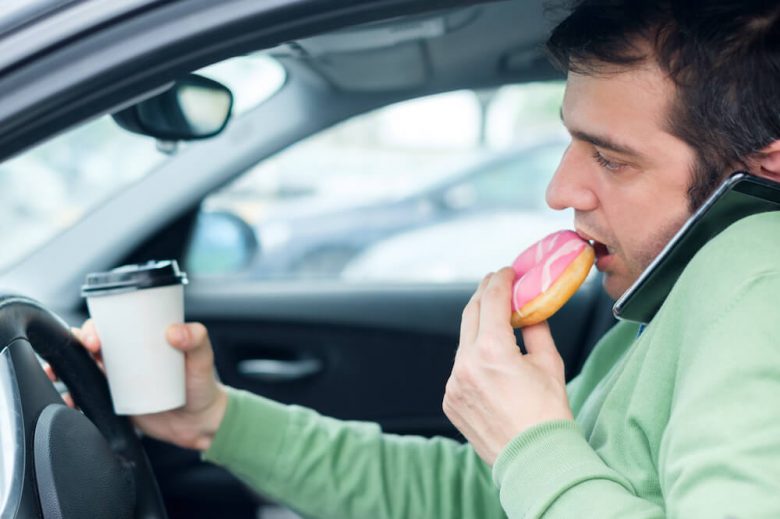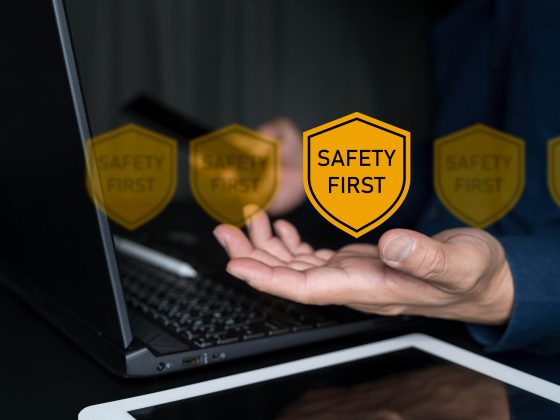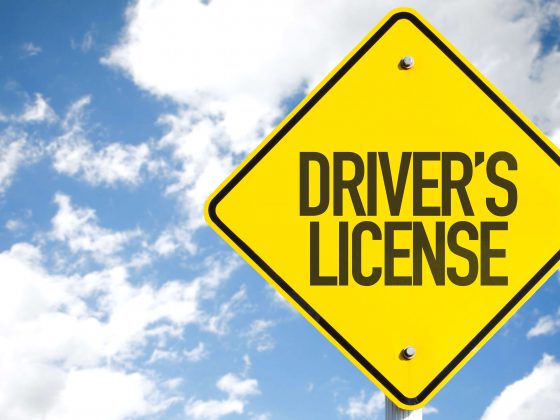Driving can be a lot of pressure. We have faith that people around us will make good choices and practice safe driving. Mellowed.com says that 60% of drivers get stressed while driving. Research mentioned in TIME magazine says a daily car commute can raise blood sugar, cholesterol, and the risk of depression as well as drops in fitness and sleep quality.
Use eTags© to Quickly Complete Your DMV Service. Renewals, Title Transfers and More, All Online!
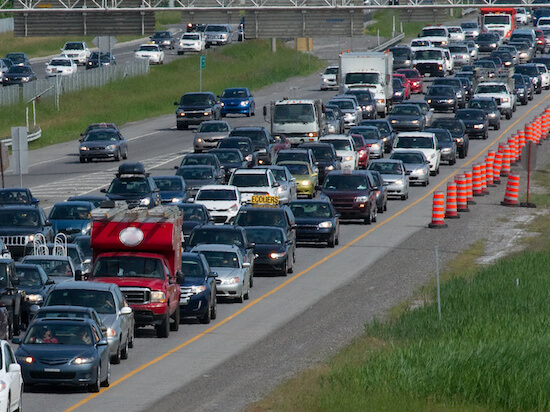
The Journal of Public Economics even published a study showing a link between congestion and domestic violence. From 2011 to 2015, extreme evening traffic on two highways — I-5 and I-10 — increased nighttime domestic violence by about 9%. In other words, there’s plenty of proof that driving is hard on many people.
When you’re stressed, you could be feeling any combination of emotions like anger, aggression, or anxiety which puts yourself, your passengers, other motorists, and even pedestrians at risk. Here are seven tips to reduce stress while driving to keep you and others safe on the road.
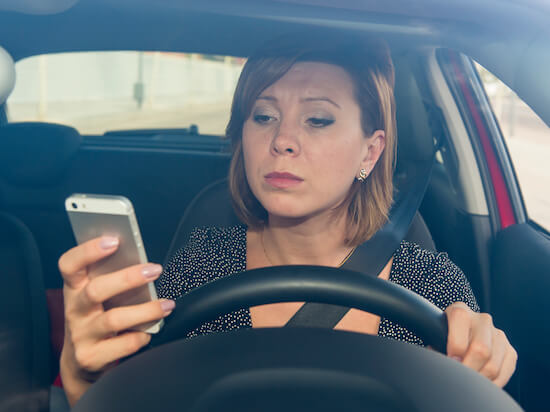
Turn off your cellphone
Distracted driving is one of the leading causes of rear-end collisions. Using your phone while you’re behind the wheel isn’t only dangerous in that it takes your eyes off the road, but it can alter your state of mind depending on what you’re looking at. Maybe you received a mean text message or checked your email and got some bad news. This can stir emotions that might increase anxiety while you’re operating your vehicle.
Over 1,000 people are injured every day in crashes caused by distracted driving
The art of safe driving requires your full attention. In order to keep your concentration on the road, leave your phone on ‘do not disturb.’ Apps like Drivesense will give you a break on your car insurance for driving safely. When you download the app, it tracks your safe driving and automatically gives you a discount on your insurance.
Listen to music behind the wheel
Have you ever heard of “Carpool Karaoke?” Jamming out can be a good way to release tensions while driving. If you’re sitting in traffic, go ahead and turn up the tunes. Upbeat music can make you perk up and help you to concentrate better, while slow songs can calm your mind, making you feel relaxed. Our mood can greatly influence our everyday behaviors.

Listening to music is a sensible way to to reduce stress and anxiety. Twitter polls show some favorites in the relaxing music category including Tiny Dancer by Elton John and Don’t Know Why by Norah Jones. Thank You by Dido and Simon and Garfunkel’s America are also popular choices. The National Institute of Health says listening to music can positively impact mood while driving which in turn can impact behavior behind the wheel.
When it comes to a real driving phobia, some only fear specific driving situations like driving in storms, at night, or on freeways, while others are scared to just sit behind the steering wheel.
Take deep breaths
This one might sound obvious, but if you feel panic setting in and you need to calm down, take some deep breaths. Just make sure you pull over in a safe area. Deep breathing increases the supply of oxygen to your brain and stimulates the parasympathetic nervous system. It puts you in a state of calmness. Try breathing deeply in through the nose, holding a lot of air in your diaphragm and out through your mouth. Repeat this action at least five to seven times coupled with some calming sounds to bring you back to a relaxed state. You’ll feel much more optimistic and better able to cope.
In a study of 1,672 bus drivers who left their profession, 25.6% left due to stressed driving
Leave yourself enough time
It’s pretty much a scientific fact that waiting until the last minute causes high levels of stress and anxiety. Time management is something that’s practiced in so many other aspects of our lives at work, at school, even with our families. Use the same practices when planning to be out on the road.
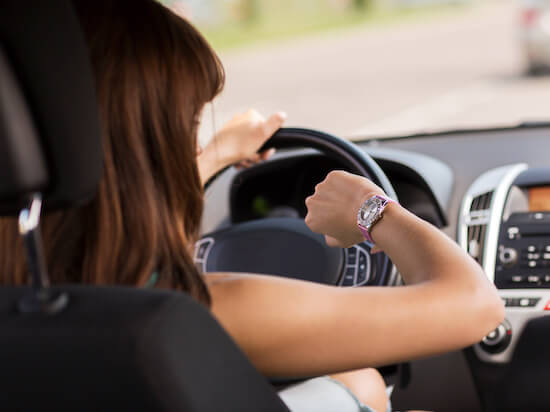
It’s always better to be a bit early than to be a bit late. This will keep you calm and focused on the road. Not stressing while rushing to get from point A to point B will ensure a safe trip and keep anxiety levels low. Also, if you leave enough time to get to your destination, you’re more likely to drive within the speed limit. In 2019, speeding was a contributing factor in 26% of all traffic fatalities.
Slowing down isn’t just better for your peace of mind, but for the safety of the public. Consider using Maps or navigation apps like Waze on your phone and maybe even planning your route before you go. Waze is really cool because you can add stops to your trip. If you’re taking a long trip and want to factor in the stops along the way, you can do it beforehand!
This specific phobia of driving has a few names: amaxophobia, ochophobia, motorphobia, or hamaxophobia
Make yourself comfortable
Simply adjusting how you sit in your car will help you stay more relaxed when behind the wheel. Make sure your seat is close enough to the pedals that you can reach, but not so close that your legs have no room. Stay loose with an unclenched jaw, relaxed hands, and don’t hunch over your steering wheel. Try sitting back and resting on the back of your seat. Shake out your arms and hands when possible to stay loose. Remember:Thoughts and emotions affect posture, and posture affects thoughts and emotions.
Driving day in, day out can take a toll on your body. Sore shoulders, a stiff neck, lower back pain and more. Bad posture can contribute to all that discomfort. Poor posture can also make you more vulnerable in case of car accident. If you commute regularly, try looking up ergonomic tips that can help unload some of the strain you may feel when driving.
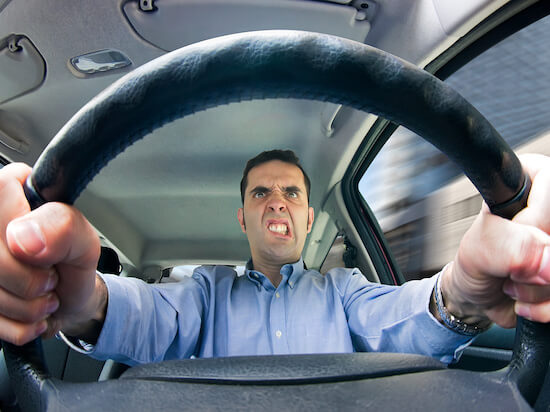
Los Angeles, New York City, Miami, Phoenix, and Tampa rank as the top cities for road rage
Avoid aggressive drivers
Keep your distance from drivers showing erratic behavior. If you see a lot of swerving, lane changing or road rage, know they’re all signs of an aggressive driver. The American psychology Association says 50% of drivers respond to the careless acts of other drivers with aggressive behavior. It’s best not to react as it will only raise your own anxiety levels or even anger the aggressive driver further. Instead just allow them to pass and keep a safe distance from them. Not only will you have avoided an unsafe situation, but you’ll have saved yourself from rising stress.
SEE ALSO: 6 SHOCKING ROAD RAGE STATISTICS
The pandemic has certainly impacted driving behavior. Isolation, financial woes, and grief are adding to everyday stress. In 2020, according to a Everytown for Gun Safety study, an average of 42 people per month nationwide were shot and killed or wounded in road rage shootings — double the monthly average for the prior four years. And last year, someone was shot and killed or injured in a road rage incident on average every 18 hours in the U.S.
Avoid eye contact with an aggressive driver, they’re already angry! Keep the transaction impersonal by keeping your attention on the road and your hands on the steering wheel

Pull over and take a break
Finally, if you’ve tried all the techniques and you’re still feeling super anxious or stressed, just pull over. It’s not worth hurting yourself or someone else in the midst of an anxiety attack. Pullover, and take a break. Negative thoughts or emotions will distract you from safe driving. When you’ve stopped, clear your head, take your breaths and even call a friend if necessary. Before pulling over, make sure to locate a safe space to do so. Only when you feel it’s safe again, resume your trip.
Stressed driving can be prevented if you’re aware of your triggers. But sometimes it’s unavoidable. Left unchecked, anxiety-ridden drivers are not only a danger to themselves but to others around them. Heed these tips to stay stress-free on the road. Take care of your mental health and drive safely!
